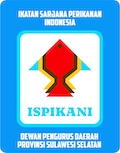Alternative Livelihood Potential of Fishermen Households in The Liukang Tangaya Aquatic Conservation Area, Pangkajene Islands Regency
DOI:
https://doi.org/10.35911/torani.v5i1.19059Keywords:
Alternative livelihoods, aquatic conservation areas, fishermen's householdsAbstract
The potential and development of alternative livelihoods for fishermen households in marine conservation areas must be relevant to or refer to the context of contextual technical considerations (locality), and not a deduction or bottom-up policies derivation so that they can grow and develop (facilitating) local fishermen's households in production activities that are complementary to increasing the spirit of the locality, community harmonious with natural resoureces and welfare through the opening of new economic spaces that can be accessed and controlled by the local community themselves. This type of research is qualitative with a case study approach. Data was collected through direct observation and in-depth interviews with some informants. There are 30 fisherman’s household which is used as primary data source informants. Qualitative analysis based on technical variables, namely community interest, availability of local raw materials/natural resources, availability of labor and market opportunities through content analysis from compilation of interview results through snowball technique with reference to triangulation principle. While quantitative data analysis is carried out with business feasibility indicators for new alternative types of livelihoods that can be applied to fishermen households, namely B/C Ratio indicators, Return Of Investment (ROI), and Payback Period (PP). Research result show that based on the analysis of technical variables, the potential alternative livelihoods carried out by fishermen households are seaweed aquaculture, floating net cage aquaculture, processed fishery products, coconut and household scale chicken and duck farming. The B/C ratio value of these businesses is > 1 with very profitable criteria to do.
References
Asri, M., Wahyuni, E. S., & Satria, A. (2019). Destructive Fishing Practices. Sodality: Jurnal Sosiologi Pedesaan, 7(1), 25–33.
Babbie, E. (2004). The Practice of Social Research. USA: Thomson Wadsworth.
Balai Pengelolaan Sumber Daya Laut dan Pesisir (BPSPL) Makassar. 2018. Laporan Pencadangan kawasan Konservasi Perairan Kec. Liukang Tangaya Kab. Pangkep. Maros.
Jumardi, N., Djafar, S., & Tamsil, A. (2018). Strategi Pengembangan Mata Pencaharian Alternatif Untuk Meningkatkan Pendapatan Rumah Tangga Nelayan Di Pulau Kodingareng Kota Makassar. Journal Of Indonesian Tropical Fisheries (Joint-Fish): Jurnal Akuakultur, Teknologi Dan Manajemen Perikanan Tangkap, Ilmu Kelautan, 1(1), 49–58.
Miles, M.B, Huberman, A.M, dan Saldana, J. (2014). Qualitative Data Analysis, A Methods Sourcebook,Edition 3. USA: Sage Publications.
Mira, M. (2017). Keunggulan sub sektor perikanan dan pariwisata bahari dalam struktur perekonomian wilayah pulau-pulau kecil. Jurnal Sosial Ekonomi Kelautan Dan Perikanan, 8(2), 145–156.
Nababan, B. O., & Sari, Y. D. (2014.). Identifikasi dan strategi pengembangan mata pencaharian alternatif di taman wisata perairan laut banda. Jurnal Kebijakan Sosial Ekonomi Kelautan Dan Perikanan, 4(1), 57. https://doi.org/10.15578/jksekp.v4i1.221
Paulangan, Y. P., Amin, M. A. Al, Wahyudin, Y., & Kodiran, T. (2018). Identifikasi Mata Pencaharian Alternatif Masyarakat Lokal di Calon Kawasan Konservasi Teluk Depapre, Jayapura. Jumabis: Jurnal Manajemen Dan Bisnis, 2(2).















